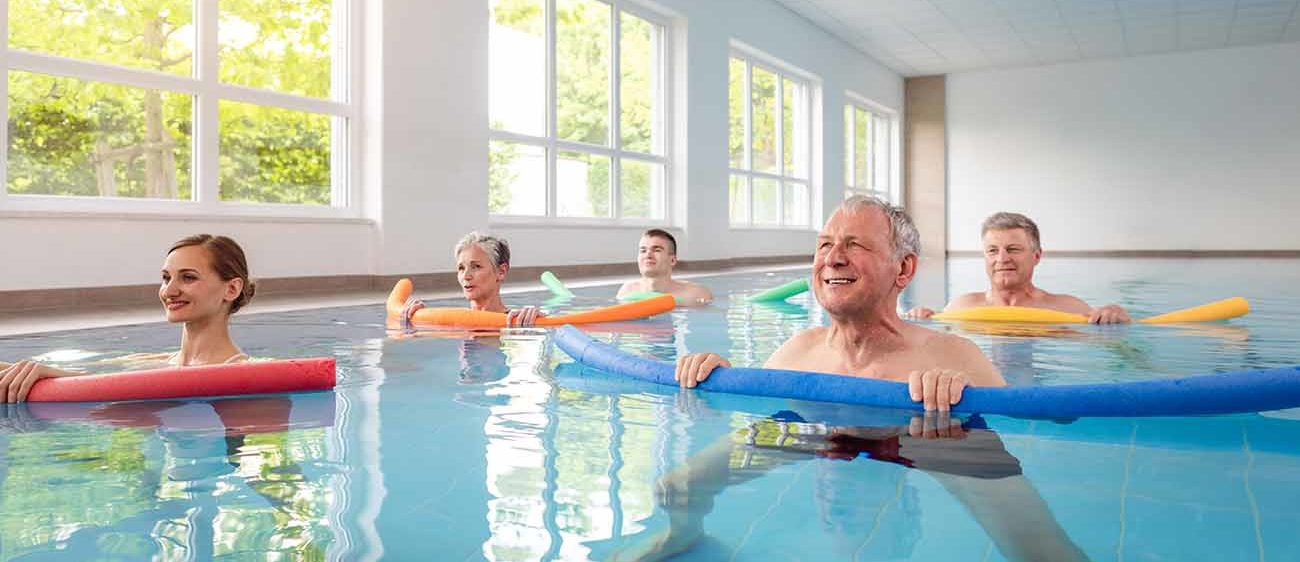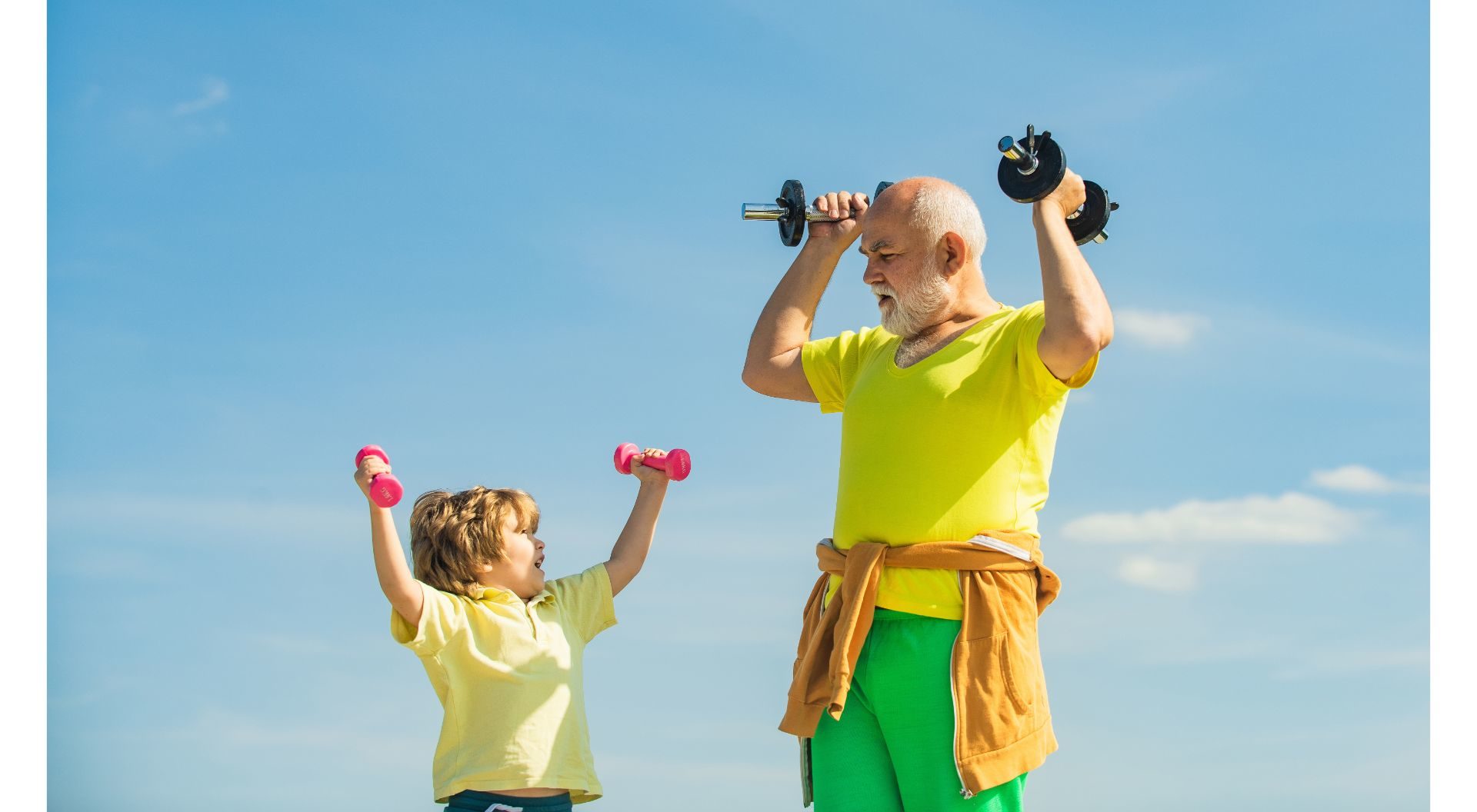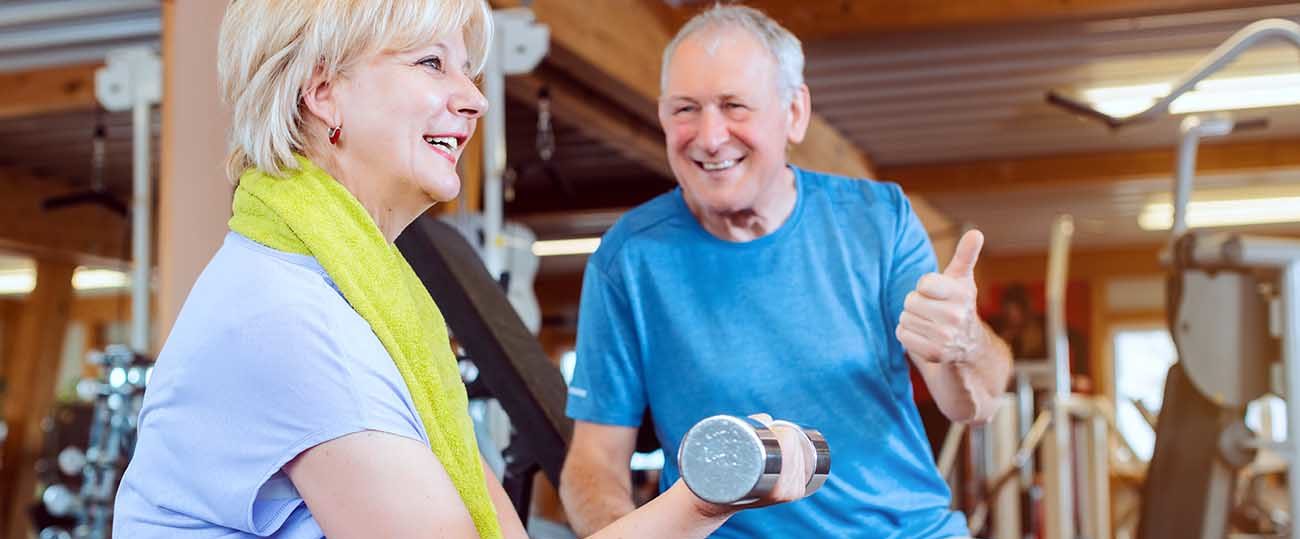Benefits of Working Out for Older Adults
Older adults can see many benefits from participating in strength-building activities on a regular basis. However, only 23% of American adults meet suggested guidelines of two muscle-building activities per week. Doing at least two of these activities per week can have numerous benefits on health. These include reduced inflammation, improved activity in the cardiovascular system, and better functioning of the metabolic system, according to researchers in Finland.
Beyond the health benefits, improved strength will also make a difference in day-to-day life for many people. Improved upper- and lower-body strength can lead to numerous benefits, including improved joint health and bone density. It will also lead to better balance and stability, improved range of motion, and increased independence for older adults. Combining all of these can make a significant difference for many older adults, leading them to be happier and more satisfied in their daily routine.
Best Strength Exercises for Older Adults
There are a wide range of options when it comes to strength-building exercises. For those seeking convenient activities they can fit around their daily routine, body-weight exercises are a great option. These are activities that don’t require any equipment, and simply use the body’s own weight for resistance such as squats. If they want to increase the amount of different exercises they can do, equipment such as dumbbells or machines like you’d see in a gym are great options.
Whichever route is best, make sure that that every workout begins with at least a 5-10 minute warmup. This will reduce the chances of injury while exercising, and lead to less soreness and inflammation in the days following the workout. Talking with your doctor can be a great way to determine an appropriate level of activity, and starting slow and working your way up to the right level of activity is always a good way to go.
Body-Weight Exercises
Body-weight exercises mean that rather than using equipment such as dumbbells or exercise machines, one simply uses the weight of the body as resistance on the muscles. They are great for beginners or those who don’t have the ability to access gym equipment, as almost any muscle in the body can be strengthened with some form of body-weight exercise.
Upper Body
- Wall or Counter Push-Ups
- Start by resting your open hands on a wall or counter, with your shoulders parallel to the surface. Slowly let your body lean down into the surface by bending your arms, then push them back up. The closer you come to being parallel with the floor, the more difficult it will be, so starting with the wall and then switching to a counter once you’ve developed some strength can be a good way to go.
- Shoulder rotations
- Over time, people tend to develop worse posture, with their shoulders leaning into their chest and back hunched forward. Shoulder exercises can be a great way to improve posture, making everyday life more comfortable. This exercise can be done seated or standing. Raise your arms at your sides as high as possible (don’t worry if that’s not very high at first), roll your shoulders back, then slowly rotate your arms in a circle until it becomes difficult. This doesn’t sound like much of an exercise, but it’s actually very challenging and can make great improvements to range of motion.
- Front/side arm lifts
- This is also an exercise for shoulders. Start with arms resting at your sides, then raise them as high as possible either directly forward, or directly out to the sides. Repeat until this becomes difficult to do any more, then rest.
Lower Body
- Chair Squats, AKA sit-to-stand
- Find a chair in your home that has a firmer seat, and full back. Seats such as a La-Z-Boy that have a deeper seat are not good for this exercise, as they require much greater effort to get in or out of, and make it more difficult to focus on specific muscles. Simply sit, then stand, and repeat as many times as possible until it becomes difficult. You should be trying to get as close to a “squat” form as possible, however you may need to use the back of the chair for support until lower body strength improves.
- Step-ups
- Find a stable surface in your home that is about 6 or so inches from the ground (the first step of a staircase is great for this). To make it safer, make sure you’re next to a railing or wall that you can lean on if needed. Start from the ground, step onto the surface with one foot, then step up with other foot. Go back to the ground, and repeat until it becomes difficult to continue.
- Calf raises
- Start with both feet flat on the ground, and raise your heels as high as possible until you feel a strain/tension. Repeat until it becomes difficult to raise completely. Rest a hand on a wall or railing to improve stability.
- Lunges
- This exercise puts together the previous three exercises into one, requiring a wide range of motion. This should not be attempted unless fully comfortable with the previous three exercises, or already physically fit and stable. Rest a hand on a wall or railing to improve stability when first attempting. Start by standing with both feet shoulder-width apart. Extend one foot as far forward as possible, plant into the ground and squat, then bring the other foot forward as you come back up so you’re back to both feet even with shoulders. Alternate each side until you become tired or feel exhaustion in muscles.
Dumbbell Exercises
- Bicep Curl
- Hold a dumbbell in each hand, with arms resting at sides. While holding weights, turn your hands sideways so palms face upwards, and slowly bend your arms at the elbows until the dumbbells come up to your shoulders. Extend your arm until they’re back to resting at your side, and repeat until it becomes difficult to do any more. Most people start with 5 pound dumbbells and increase in weight from there, but start at whatever weight is safe and comfortable.
- Overhead Press
- This is a shoulder workout. We suggest waiting to attempt this until you’ve improved range of motion with shoulder exercises such as those above. While holding a dumbbell in each hand, raise your arms and rest them about even with your head, holding the weights with palms facing upwards. Slowly push the weight upwards, attempting to extend fully. Once extended as much as possible, let them back down and repeat until it becomes difficult to continue. 5-10 pound dumbbells is a safe starting point.
- Bent-over rows
- This is only for those who are comfortable leaning forward while maintaining balance, although there is modifications one can make that make this easier balance-wise. While standing and holding dumbbells in each hand, lean forward and let your arms hang down. Slowly raise them by bending your elbows until they’re about even with the rest of your body, and then slowly release until your arms are hanging down again. Do this until it becomes difficult.
- Single-arm bent-over row
- A modified version that is better for those with limited range of motion is to do one side at a time. Rest a knee on a chair or other stable surface with the other foot on the ground, bend over and do the row with the side opposite the knee on the chair. Do until it becomes difficult, then switch sides.
Machine Exercises
For those with access to a fitness center or space for a home gym, exercise machines offer a far wider range of options for different workouts. We won’t cover them here as your options will depend on what equipment is available at your gym, but asking an employee to show you how to use certain equipment can be a great way to ensure you’re using them safely. If you don’t have a membership, many gym chains offer discounts through the AARP.

Fitness Hub
Our center for all things health and fitness, helping you find an exercise routine that works.

Strength Equipment
Having the right equipment can make building muscle much safer and more efficient.

Aerobic Exercises
Experts suggest that older adults complement strength-building with regular aerobic activity.




Leave a Reply